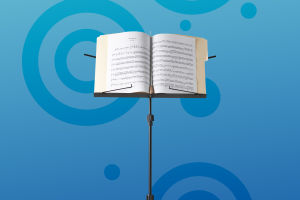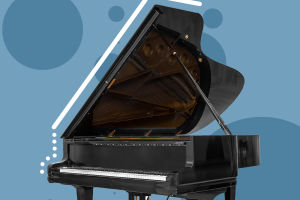The violin is a stringed instrument. There are four strings in total. The vibration is generated by the friction between the string and the bow and then transmitted to the backplane through the sound column in the resonator box. The resonance generated by these parts produces a harmonious and bright sound.
The violin is widely spread in the world and is the most important instrument in the string section of the modern orchestra. It plays a very important role in instrumental music, is the pillar of the modern symphony orchestra, and is also a solo instrument with high-difficulty playing skills. Together with piano and classical guitar, it is known as the world's three major Musical Instruments.
The violin is a very characteristic and individual instrument. It's loud, bright, delicate, charming, and expressive. The playing technique is extremely flexible. It has a beautiful timbre like a human voice and can play a variety of melodies. And can play difficult music.
The violin has a lot of skills. In symphony performance, there are many difficult skills. For example, bow jumping, plucking, overtone, and other violin-playing skills, all belong to the "high skills" category.
According to historical records, the earliest violins were made by a man named Dassalo who lived in the northern Italian town of Britain. At the same time, in the city of Cremona. Amati was also A pioneer in violin-making.
From the 16th century to the 18th century, the violin manufacturing industry in Italy developed rapidly with the unprecedented prosperity of music art. G.P. Machine, N. Amati, A. Stradivari, and C. Guarneri were born to make violins that are now rare masterpieces. At the same time, European countries violin production also gradually developed.
In the mid-17th century, Matthias Koloz, the most famous German violinist, started the history of violin manufacturing in Mittenwald, southern Germany. In addition, the British violin industry also has a foothold in the whole of Europe.
After the 18th century, the leading position of violin manufacturing shifted from Italy to France. During this period, the shape of the violin was constantly improved to achieve greater volume and better sound quality.
The French luthier N. Rupo used Stradivari as an example to combine French and Italian luthmaking techniques. At the same time, the tour of France made a major reform on the length, weight, shape, and device of the bow.
The development of the violin during this period reflected the performance requirements of the violin, such as the singing quality of Haydn, Mozart, and Beethoven, and the greater changes in bow handling.
From 1789 to 1799 there were symphonies and concert halls for the public. To adapt to the changing environment, violins need to increase their volume.
In the late 18th century, conservatories appeared in Europe one after another, which greatly increased the demand for violins and thus promoted the development of the machine-made violin industry.
From the Italian handmade violin craft, the famous are mostly family inheritance. Including materials, paint, and techniques.
And different from German violin precision data and American violin industrial technology production. In the beginning, however, the sound of a violin made entirely with traditional techniques was not as good as that of a violin made with precision.
But with the passage of time and wear, a long time of resonance will wear away the original acute Angle, making the violin sound more mature and harmonious. In other words, the Italian-style violin leaves room for time to work with the player, rather than starting with a perfect tone.
With the accumulation of time, its tone will be marvelous. This is why great players choose older violins that are one or two hundred years old or more, and most of them are famous Italian ones.


